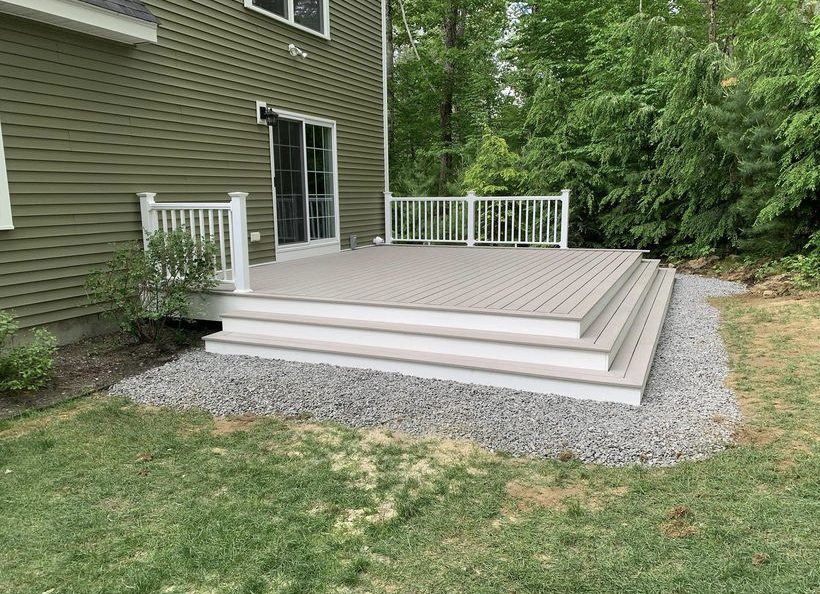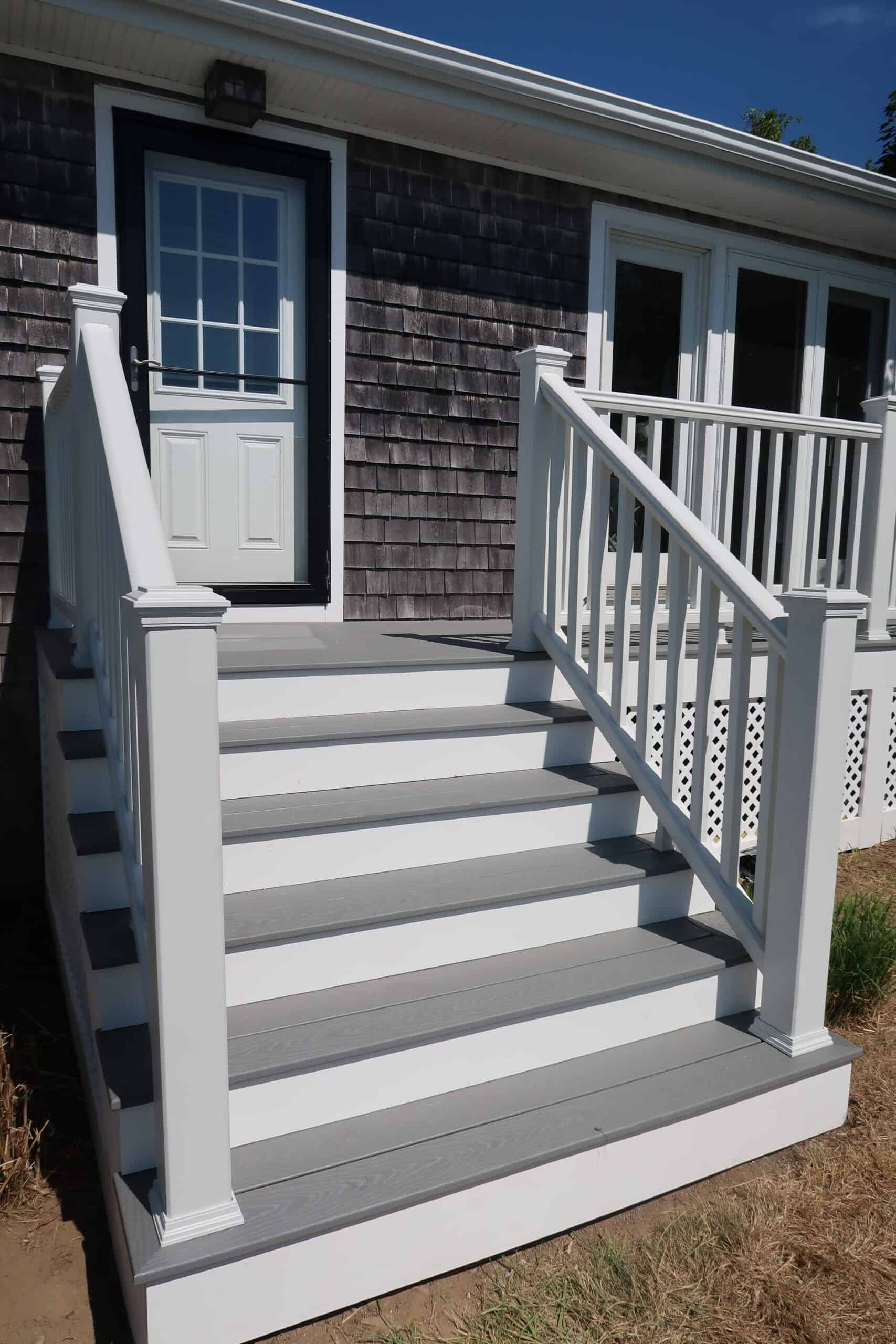
Pros & Cons of Composite vs. Pressure Treated Decking
Choosing between Composite and Pressure Treated decking can be hard! You want a deck that will last, as well as a deck that compliments both your aesthetic AND your budget. We have created a list of Pro’s and Con’s of Composite vs. Pressure Treated Decking, in an attempt to make that choice a little bit easier.
Composite Decking
Pros
Composite Decking is less maintenance over time. It is easy to clean with soap and water and does not require sanding or staining year after year like pressure treated wood does.
Because they require less maintenance, over their lifetime, composite decks have a lower cost associated with them. Additionally, composite decks can last longer than pressure treated wood, which helps mitigate replacement costs in the future.
Composite decking is made from recycled materials, which is not only eco-friendly, but also provides for better water resistance. Most composite boards also have a capped edge, which is a polymer sleeve that protects the core of the board from moisture damage and is more durable against rotting, mold and cracking.
Unlike pressure treated lumber, which requires staining or painting to get the color you want, composite decking comes in a wide variety of color and texture choices. Finding which color may suit you can be tough, but Trex makes it easier with their ‘Trex AR Visualizer’ App. You can download this from the app store on iPhone and Android to visualize different decking and railing options in your space.
Cons
The first Con of composite decking is that it has a higher up front cost than pressure treated decking. In general, composite decking is around $2.00 – $9.00 per linear foot depending on the grade, whereas pressure treated decking is around $1.00 – $3.00 per linear foot.
Composite deck boards retain heat more than pressure treated boards. In the summer, composite boards can get hot depending on the color and grade you choose. However, when you stain or paint a pressure treated board a dark color, it can also get hot in the sun. This is important to keep in mind when choosing the material or color choice.
Repairing a composite board when it is damaged can be more difficult than pressure treated lumber. You cannot sand or stain composite deck boards, which means if there is a crack in the board – the entire board has to be replaced.
Pressure Treated Wood
Pros
Pressure Treated Lumber is lower in cost compared to composite materials. It has a lower up front cost when building the deck itself.
The wood is natural, no two pieces of pressure treated lumber looks the same, which gives your deck a natural and unique style.
Replacing pressure treated boards is easier than composite. In some cases, you may be able to just sand the board without removing it, or applying stain. If you need to replace the board it is straightforward. Just get a new board, unscrew the board, place the new board on the deck and screw it down.
Pressure treated lumber stays cooler in the summer, depending on the stain or paint you use on it.
Cons
Pressure Treated decks need to be cleaned once a year and stained once every few years to maintain the wood. Staining your deck adds a protective layer to the wood which helps prevent water damage.
After a few years, pressure treated decking can become rotted and are prone to insects. If your deck tends to have standing water often, the faster it will rot. It is important to keep this in mind when building a pressure treated deck.
Another thing to keep in mind is if your deck is in a sunny spot in your yard, it can fade over time. It may also fade faster in high traffic areas like the stairs.
Transform Your Outdoor Space Today!
Contact us for a free consultation and let’s build the deck of your dreams!

